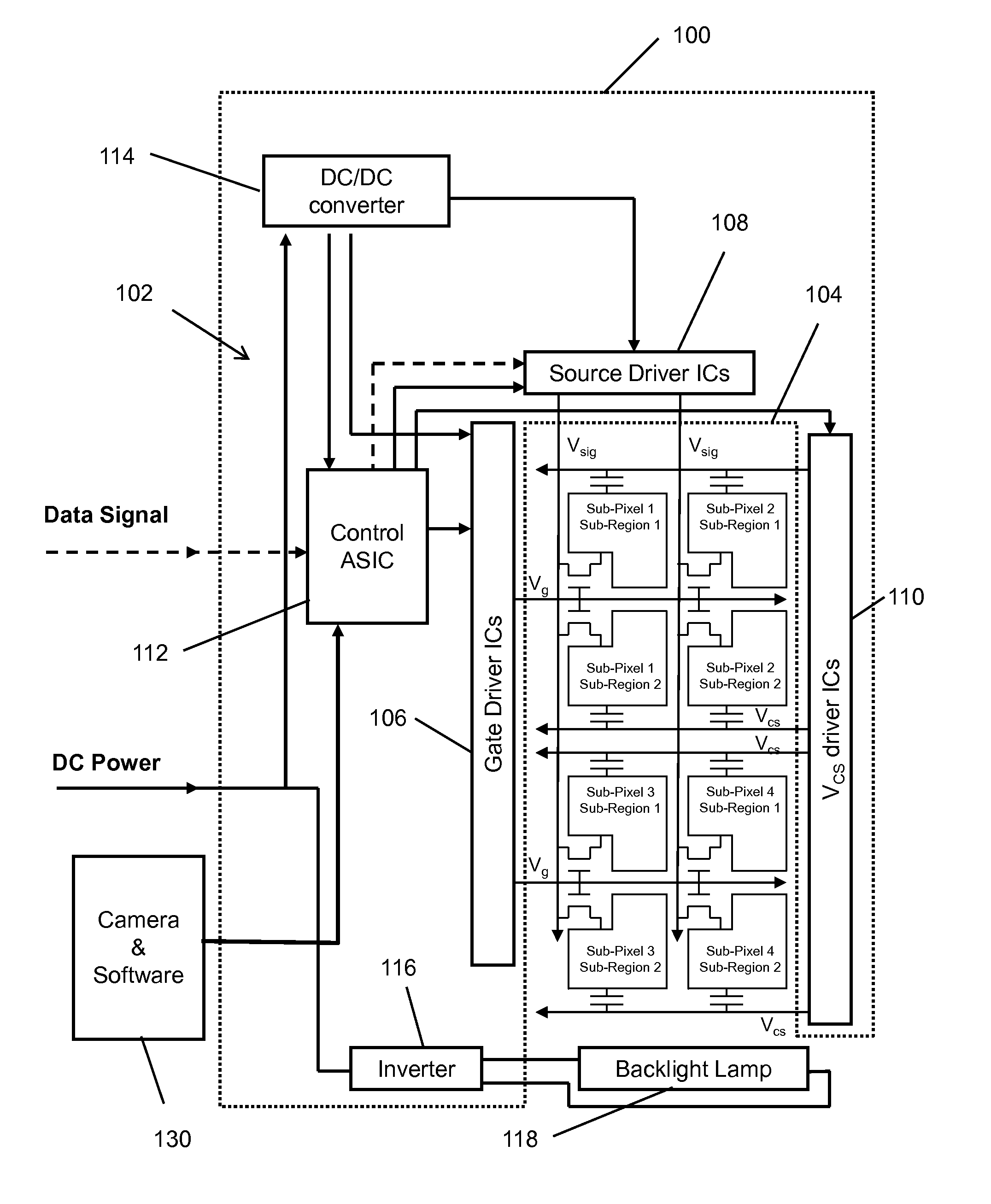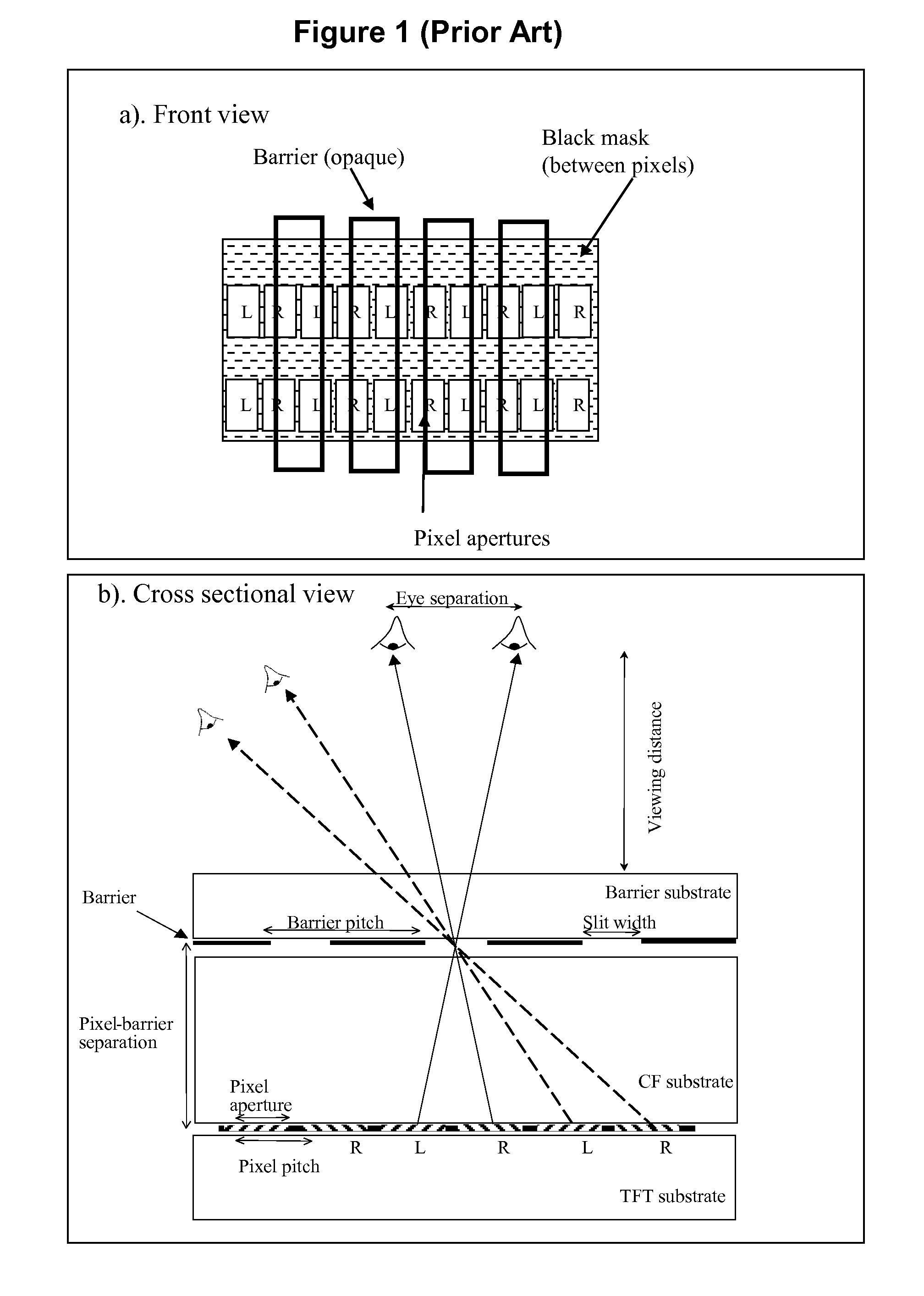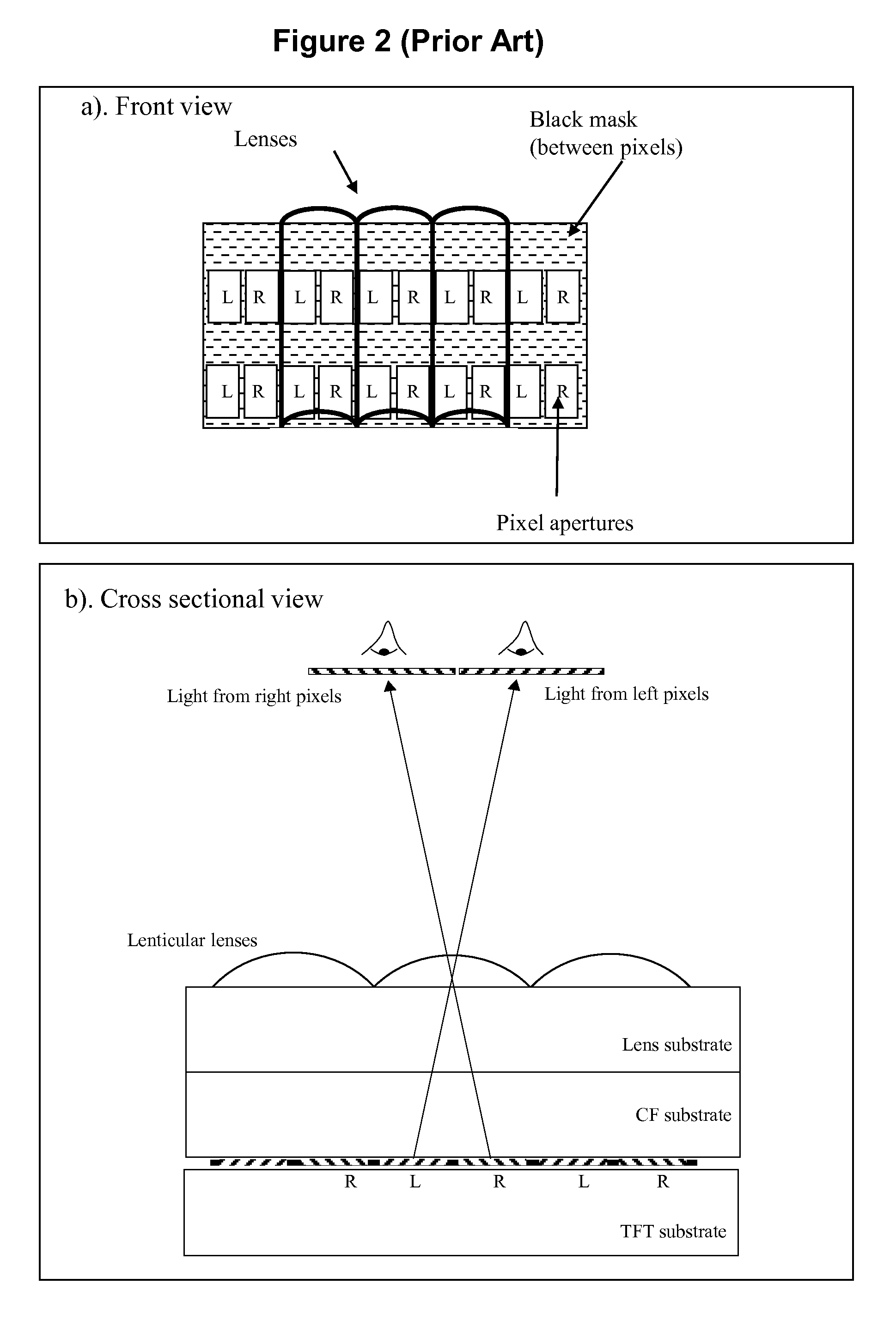Display having split sub-pixels for multiple image display functions
a display function and sub-pixel technology, applied in the field of display and sub-pixels, can solve the problems of limiting the application of the display mode to relatively niche markets, requiring additional liquid crystal switch cells, and only having 33% resolution and approximately 33% brightness
- Summary
- Abstract
- Description
- Claims
- Application Information
AI Technical Summary
Benefits of technology
Problems solved by technology
Method used
Image
Examples
Embodiment Construction
[0081]The present invention is now described with reference to the figures, wherein like reference numerals are used to refer to like elements throughout.
[0082]FIG. 3a illustrates a schematic of capacitively coupled driven split sub-pixel type multi-view display 100 in accordance with an exemplary embodiment of the present application. The display 100 includes control electronics 102 and a liquid crystal (LC) display panel 104. The control electronics 102 are designed, as conventional, to receive digital image data and to output analogue signal voltages for each pixel included in the liquid crystal (LC) panel 104. In addition, the control electronics 102 provide timing pulses and a common voltage for the counter electrode of all the pixels in the LC panel 104.
[0083]More particularly, the control electronics 102 are configured specifically to the electro-optical characteristics of the LC panel 104 so as to output signal voltages which are dependent on the input image data in such a w...
PUM
 Login to View More
Login to View More Abstract
Description
Claims
Application Information
 Login to View More
Login to View More - R&D
- Intellectual Property
- Life Sciences
- Materials
- Tech Scout
- Unparalleled Data Quality
- Higher Quality Content
- 60% Fewer Hallucinations
Browse by: Latest US Patents, China's latest patents, Technical Efficacy Thesaurus, Application Domain, Technology Topic, Popular Technical Reports.
© 2025 PatSnap. All rights reserved.Legal|Privacy policy|Modern Slavery Act Transparency Statement|Sitemap|About US| Contact US: help@patsnap.com



